“Don’t shy away from physical labor. And expect to get dirty.”
To anyone interested in joining the Environmental Management social enterprise program at Civicorps, these are the words of wisdom from Anthony Silva, a current Civicorps Crew Leader and AmeriCorps member who has participated in fire fuel mitigation projects. As Silva reports, fuel mitigation work can be, “labor intensive, repetitive, but satisfying.”
Based in Oakland, CA, Civicorps partners with 11 public agencies to complete conservation projects throughout the East Bay. With California currently experiencing the third driest year in the past century, as well as rising temperatures, wildfires are a growing concern. Civicorps is being called to do an increasing number of fuel mitigation projects.
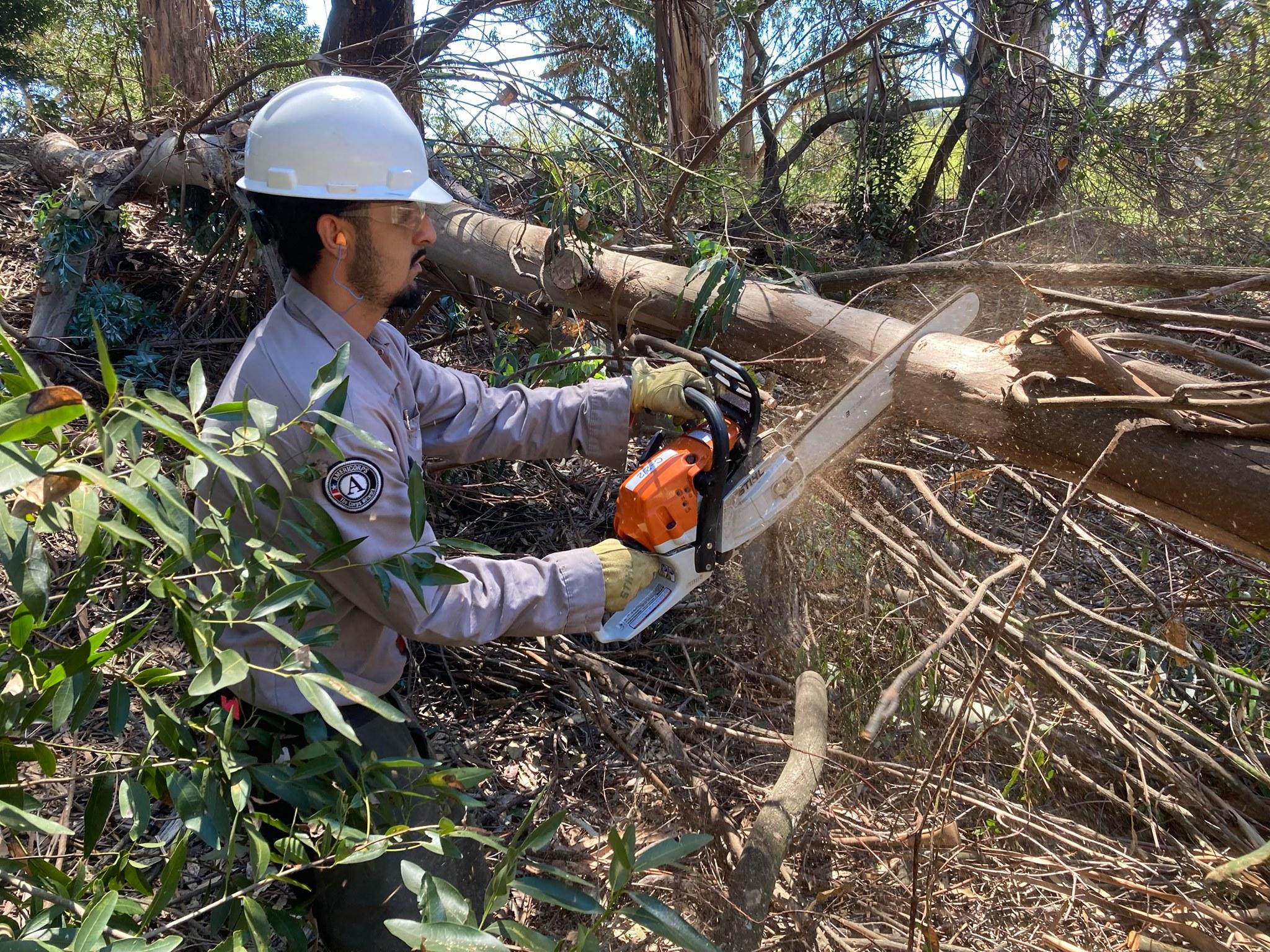
“For our sponsors, this is the number one thing they are concerned about,” said Steven Addison, Conservation Program Manager. “For our contract with East Bay Regional Park District, we spend six weeks just working with their park fire crew all over the East Bay…We’ve gotten some week-long or one-day contracts with some of our other partners…It’s all about fuel reduction. If they get a call from the fire marshal saying an area has to be cleaned up in a certain amount of time, we get a call to come help.”
Fuel mitigation projects involve cutting down vegetation to create defensible space around homes, utility lines, roads, and other assets. As Addison says, their fuel projects can take them to “pretty much anywhere that municipal spaces bumps up against private space.” In addition to East Bay Regional Park District, the Corps’ project partners include Alameda County Flood Control, Zone 7 Water Agency, East Bay Municipal Utility District, Caltrans, and others.
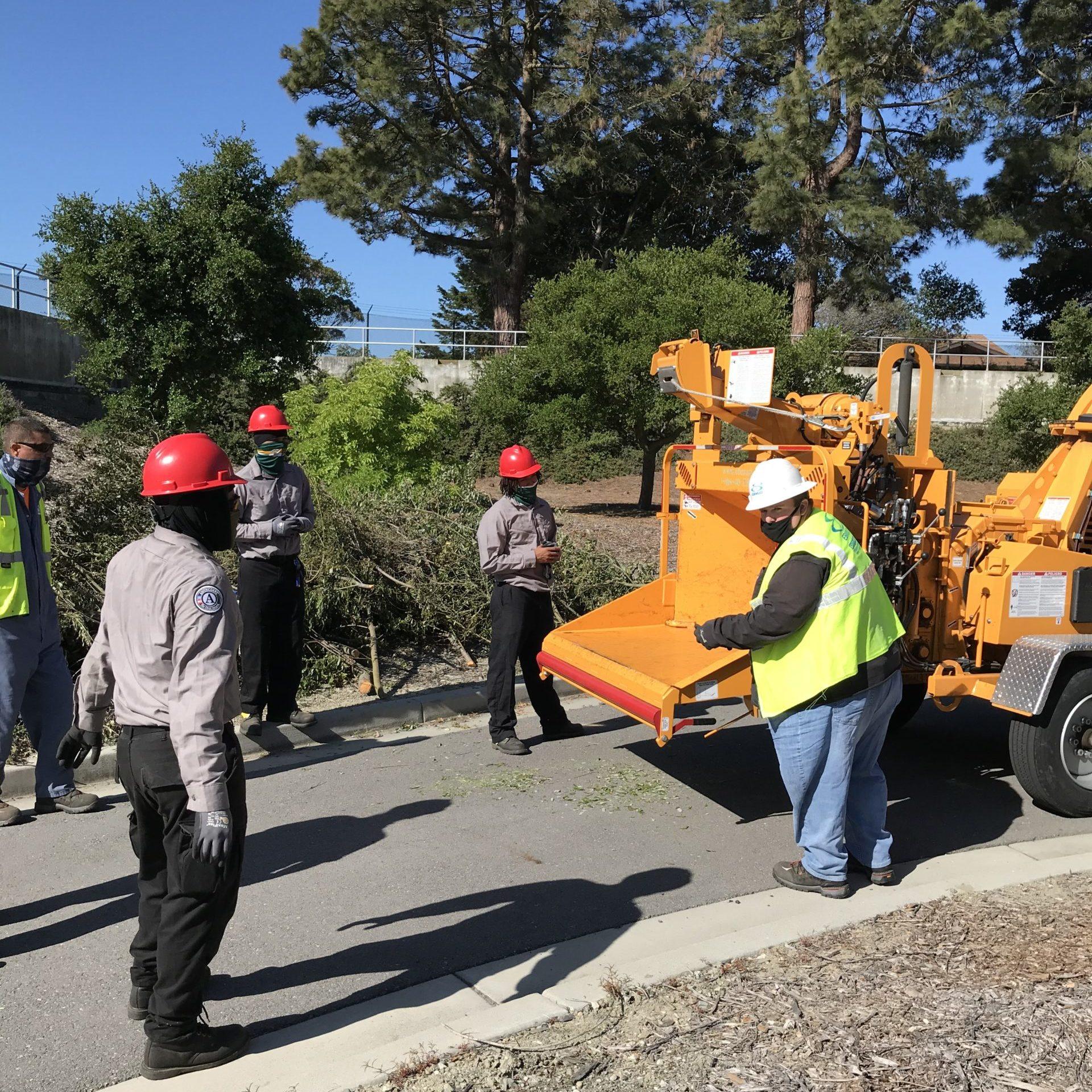
Corpsmembers receive specific training to participate in fuel mitigation work. Over the past fiscal year, 33 Corpsmembers received certifications in chainsaw operation and 46 received brushcutter training. Corpsmembers are also trained in First-Aid and CPR: important skills to have when working in hot conditions and handling dangerous equipment. The learning experience extends beyond certifications, however.
“I think the engagement piece for our young adults is numerous. One thing is that they get to go places they would’ve never gone…Some of the parks they go to, some of the land they get to see, they lose cellphone service and they’re still in the Bay Area,” said Addison. “It’s re-engaging them with their hands. A lot of our Corpsmembers come with a high school diploma, but they don’t come with job experience…They’re learning skills like coming on time, working as a team, following instructions. Sometimes they have transformational experiences, due to the work and camaraderie, which is what we’re trying to achieve with them.”
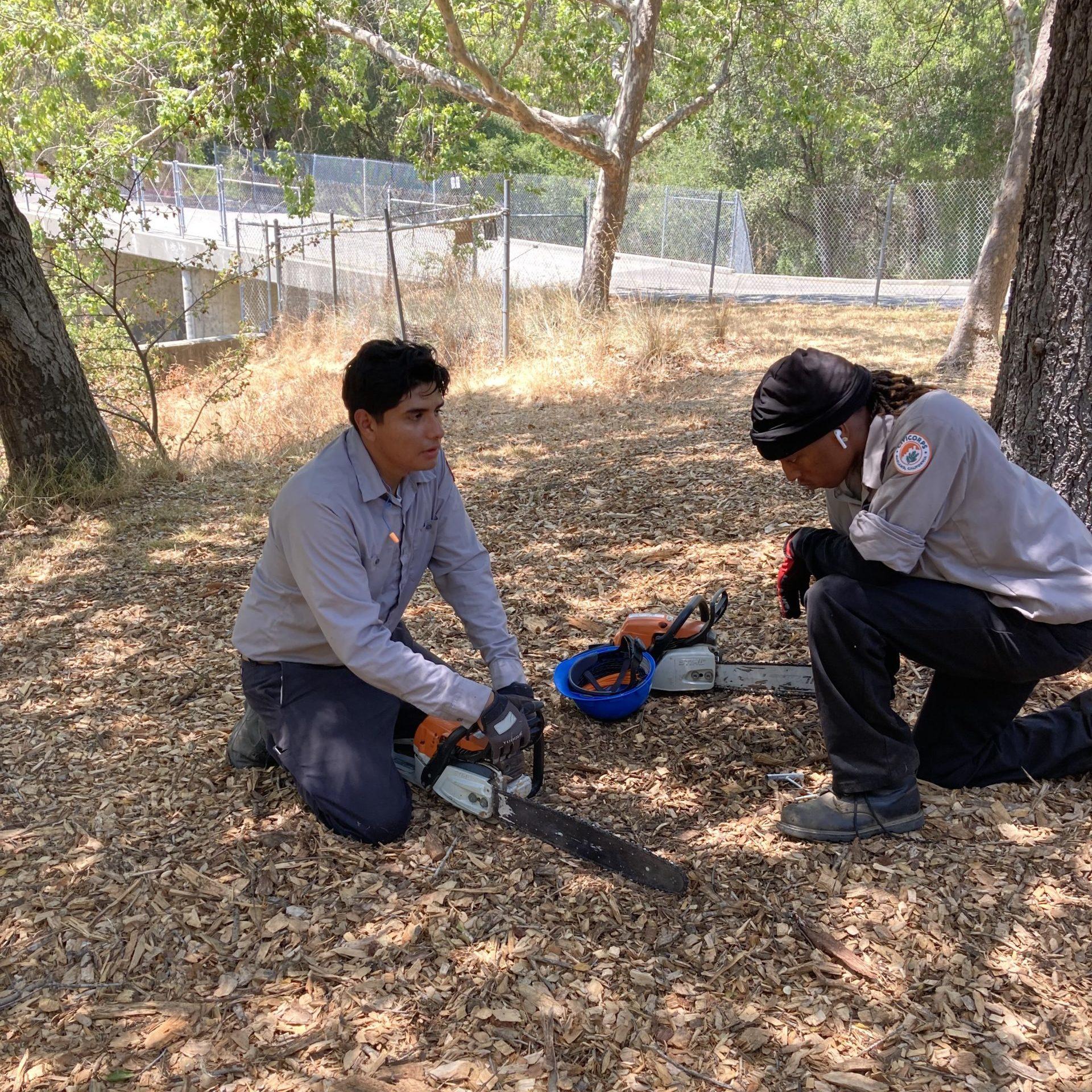
Civicorps Crew Leader Silva notes that fuel projects can be challenging: you are often trying to keep your footing and protect your ankles while working on steep hillsides. However, the challenges are outweighed by the reward of chopping down dangerous trees and helping the community.
Civicorps has occasionally had the opportunity to engage Corpsmembers in conservation and fuel-related projects outside their usual service area. For example, as part of the Save Our Sierras initiative, a crew in 2019 partnered with the California Conservation Corps on a multi-day project to address dead and dying trees at Yosemite National Park.
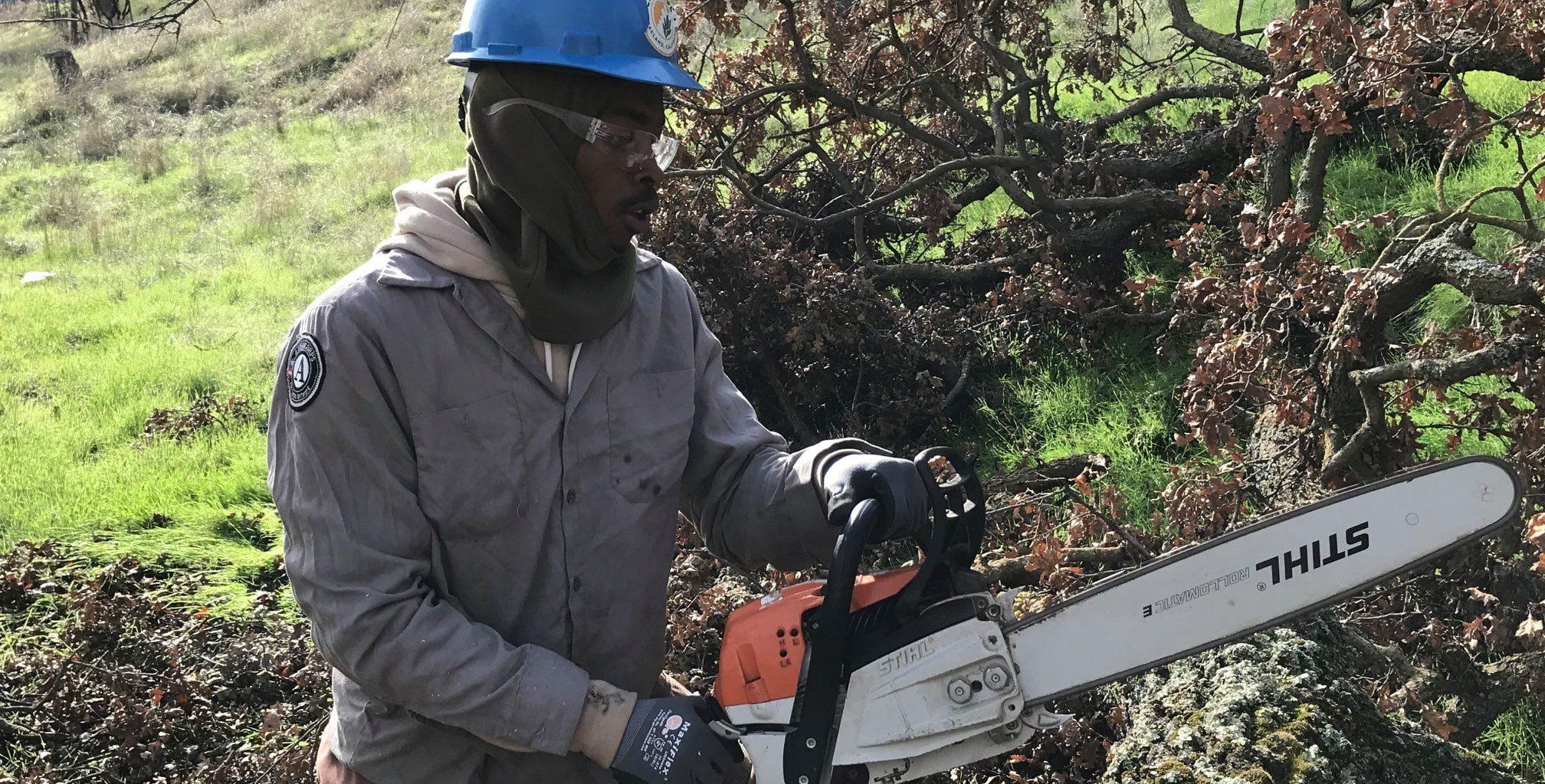
Civicorps currently has about 40 to 50 Corpsmembers participating in fuel mitigation projects. When fully staffed, they can engage up to 70 Corpsmembers in this work. Even with a smaller crew, the program has a big impact: from July 2020 through June of this year, Civicorps members performed wildland fire mitigation across 859 acres.
Bob Doyle, the recently retired Director of the East Bay Regional Park District, was a founding board member of the organization that would become Civicorps. As he mentioned in a 2020 interview with Civicorps, fuel mitigation work is increasingly important.
“Investments in land stewardship, fuels management and jobs are critical. We need an army of young people! Both the State of the California and the Federal government need to provide much more funding if we’re going to make a dent in wildfire mitigation,” said Doyle. “We should be investing in people working in forestry, folks who can work a huge variety of jobs on public lands. The volume of land is overwhelming and the urban interface — cities encroaching on the forests — is only growing. We need the education, the training and a variety of skills to get people working in forestry in addition to firefighting skills.”
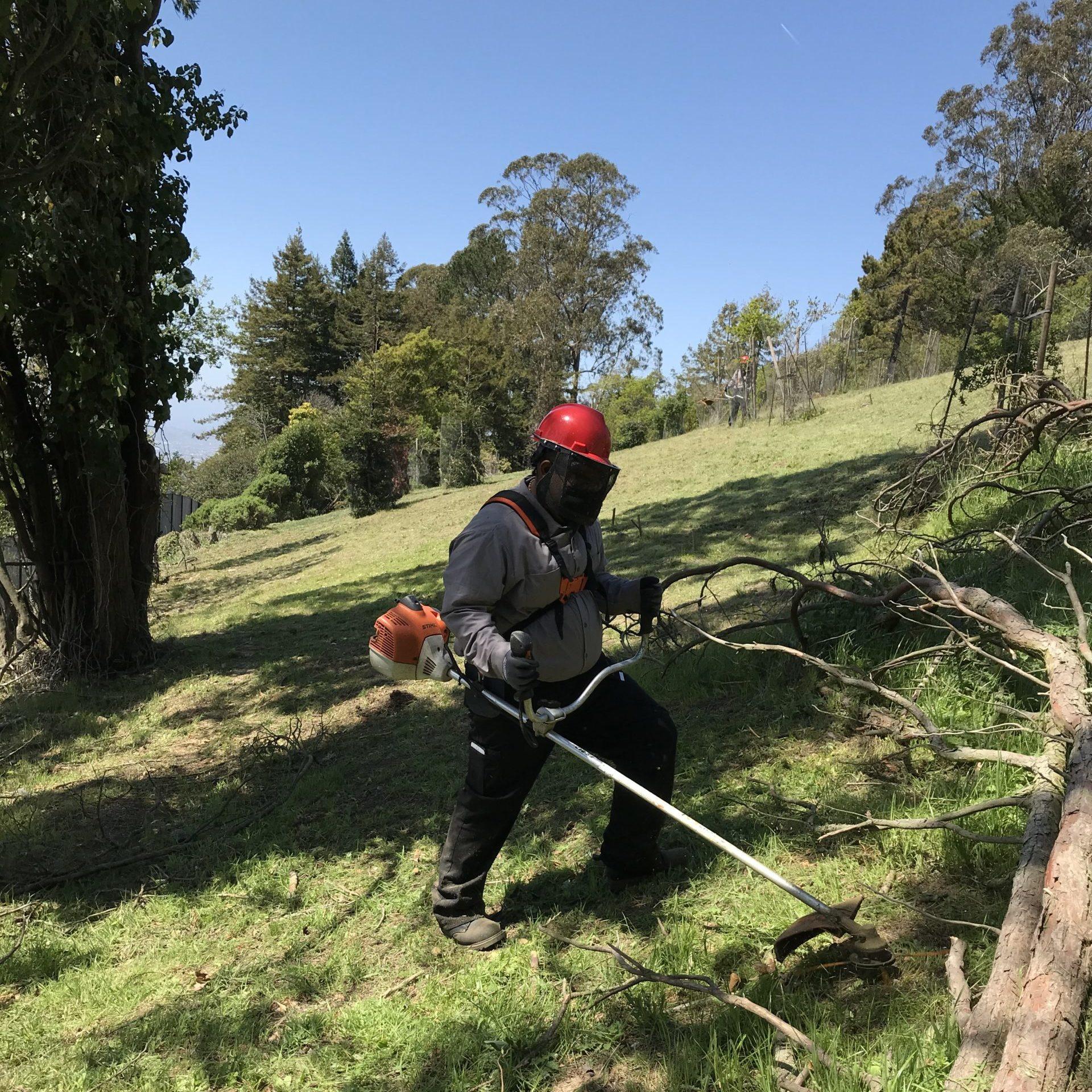
As Addison mentioned, the Corps is not short on work. They are always recruiting. While Corpsmembers don’t often come to the program with a specific interest in fuel mitigation, the experience can be inspiring. Corpsmembers have the chance to participate in meaningful fire fuel mitigation work while also learning skills that can translate into careers. The Corps has alums who took positions with other Corps, various partner agencies, arborists like Davey Tree, and the National Park Service.
Anthony Silva says his experience as a Crew Leader has allowed him to build his leadership skills. He is currently serving towards earning a second AmeriCorps Education Award.
“I want to buy a laptop with my AmeriCorps award so I can be more consistent Zooming during my college courses,” said Silva. “After the Corps I want to finish college and find a job in the sociological field, hopefully working with the youth.”
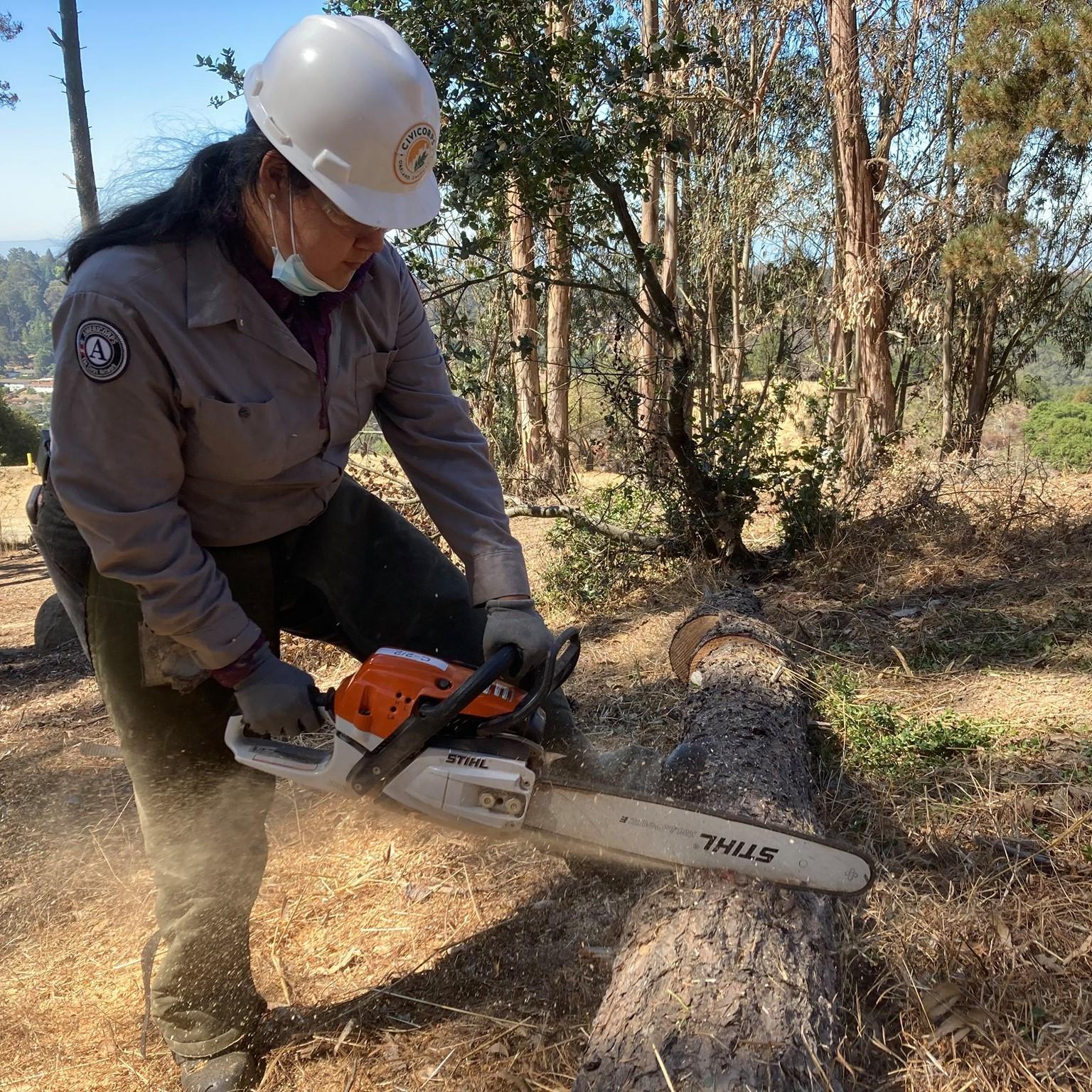
As noted by Rachel Eisner, Director of Development and Communication at Civicorps, fire fuel mitigation is an important part of their project load, but the conservation outcomes in the field are just one element of Civicorps’ mission.
“In terms of our over-arching mission as a Conservation Corps and building resiliency, the work that we’ve been doing for almost 40 years is all the more important now,” said Rachel Eisner, Director of Development and Communication at Civicorps. “The other notable aspect is that during the last fiscal year, our Corpsmembers took home $1.6 million in paid job training wages. So, in addition to the fuel load reduction and all the conservation work that we do, we’re training and employing Corpsmembers like Anthony Silva, we’re helping them build their networks…our Corpsmembers are earning and gaining concrete skills to push forward into the next stage of their career.”





































































